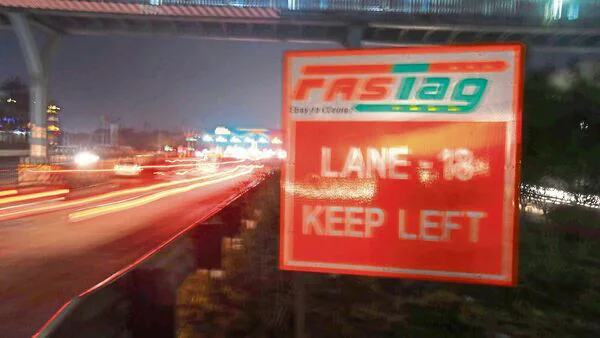
Centre To Link Highway Awards To Returns, Based On Fastag Data
Less remunerative projects, such as highway contracts showing less than 15% annual returns, will be awarded under hybrid annuity model (HAM) or engineering, procurement construction (EPC) route, where the government bears full or partial construction risk and funding. By contrast, under the BoT model, the private builder develops the road, operates it, and recovers the cost through tolls.
The move is aimed at reducing investor risk in construction of greenfield highway stretches, as the developer would be aware of likely returns on investment while bidding. This is expected to allow the government to put out more projects for award under the BoT route, which places investment risk entirely on private concessionaires. The plan is to make this route attractive for most highway project awards and expects the private sector to participate more aggressively for these projects.
Also Read | Bonanza for investors as new road builders may get to toll old ones too“As per the plan, the ministry of road transport and highways (MoRTH) has asked its highway construction and awarding entity--National Highways Authority of India (NHAI)--to do fresh assessment of traffic data for all upcoming highway projects so that projections on returns could be calculated more accurately," said the first of the two persons cited earlier, both of whom spoke on the condition of anonymity.
“This would be used to segregate highway awards with stretches projecting 15% or more returns going under BoT route while others (with less than 15% returns) getting awarded under HAM or EPC mode,” the person added.
Queries emailed to spokespersons of MoRTH and NHAI on Friday remained unanswered till press time.
Earlier reportMint earlier reported about the government' plan to introduce a new model concession agreement (MCA) by September-end. This move comes in the backdrop of the share of BoT projects in highway contract awards falling from a high of 90% a decade ago to less than 10% now. Private investors have so far shied away from taking up the entire risk of construction of highways and have instead opted for projects that have been awarded under HAM and EPC models.
Along with ensuring a minimum return on investment for highway concessionaires, the MoRTH is also taking other measures such as extending tolling rights of competing highways to the same concessionaire that is building a new greenfield stretch, as reported by Mint earlier. It has also put in place a transparent compensation mechanism in BoT contracts, where any shortfall in projected revenue will be compensated by the government. A more structured dispute resolution mechanism has also been set up, with clarity on termination payment.
Also Read | Bonanza for investors as new road builders may get to toll old ones tooExperts say the BoT model is seeing developer interest.
“BoT continues to remain a critical model, and the revived interest from developers reflects this. Developers are seeking balanced risk-sharing frameworks and timely dispute resolution to ensure sustainable project delivery,” said Jagannarayan Padmanabhan, senior director and global head, consulting, Crisil Intelligence.
Popular wayBoT (toll) was the most popular way of awarding highways till 2014. Between 2007 and 2014, only BoT model was used to build highways.
The model accounted for 96% of all projects awarded in 2011-12. But this progressively reduced to nil as investor appetite for taking risks waned and several concessionaires faced liquidity issues to complete projects won by placing over-ambitious bids. In 2018-19 and 2019-20, no projects were awarded through the BoT route. The last time the NHAI tried to assign road projects on BoT was in 2020, but it only finally got awarded in 2021. In FY24 and FY25, road developer NHAI could award just a couple of projects on BoT mode.
Also Read | Govt set to unveil new highway concession pact by September-end“This is a welcome step. This was practised earlier as well, and it is good to note that this process is being emphasised again. This will ensure that viable projects go under BoT and others go under HAM or EPC route,” said Kuljit Singh, partner and national infrastructure leader at EY India.
According to ratings agency ICRA, between 2016 and 2025, the road ministry awarded about 110,000 km of projects, of which around 90,000 km (81.5%) were under the EPC route. It was followed by HAM model, accounting for 19,943 km or 18.4% of the total awards, with the BOT model accounting for just 0.1% of the contracts awarded.
ICRA expects EPC to account for 60-65% of awards, followed by the hybrid annuity model (HAM) at 25% and 10% through the BoT (toll) mode in FY2026.
Legal Disclaimer:
MENAFN provides the
information “as is” without warranty of any kind. We do not accept
any responsibility or liability for the accuracy, content, images,
videos, licenses, completeness, legality, or reliability of the information
contained in this article. If you have any complaints or copyright
issues related to this article, kindly contact the provider above.
Most popular stories
Market Research

- Pepeto Highlights $6.8M Presale Amid Ethereum's Price Moves And Opportunities
- Codego Launches Whitelabel Devices Bringing Tokens Into Daily Life
- Zeni.Ai Launches First AI-Powered Rewards Business Debit Card
- LYS Labs Moves Beyond Data And Aims To Become The Operating System For Automated Global Finance
- Whale.Io Launches Battlepass Season 3, Featuring $77,000 In Crypto Casino Rewards
- Ceffu Secures Full VASP Operating License From Dubai's VARA



















Comments
No comment